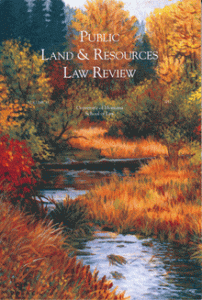INTRODUCTION
Fifty years ago, the United States took important but divergent steps to fundamentally reshape its relationship with Native Nations and its management of federal public lands.
On July 8, 1970, President Nixon delivered a Special Message to the Congress on Indian Affairs. The President’s message marked the culmination of a years-long and major shift in federal Indian policy and the longstanding federal trust obligations toward tribes. For the first time, President Nixon’s message formally and expressly rejected the United States’ prior approach of forced termination of those obligations in favor of tribally-defined priorities, including the promotion of tribal sovereignty. As the President’s Special Message noted, this about-face was justified by the “special relationship between Indians and the Federal government” and the “solemn obligations” and “specific commitments” made to the Indian people through treaties and other agreements. For their part, said the President’s message, the “Indians have often surrendered claims to vast tracts of land,” which helps explain why these agreements continue “to carry immense moral and legal force.”
Just a month before President Nixon’s message, the Public Land Law Review Commission issued its comprehensive report on the nation’s public lands. The Commission was charged by Congress to review the then-extant laws applicable to the public lands estate and recommend revisions. The Commission’s influential work laid the groundwork for much of the modern legal framework applicable to public lands and the federal agencies that manage them. Tellingly, however, neither the Commission’s report nor any of its recommendations considered the rights, interests, and role of Indian tribes in the management of federal public lands or even included any reference to the federal government’s trust obligations to those tribes as relevant to such management.
Although those reforms ushered in a new era of federal policy recognizing tribal sovereignty and a more comprehensive and effective scheme for the federal government’s management of public lands, they were mostly distinct undertakings that remained rooted in and continued the historical exclusion of tribes and their interests from public lands. Thus, despite significant advances in tribal sovereignty and self-determination over the last fifty years, the nation’s obligations to Indian tribes and its approach to managing the public domain remain largely separate endeavors. While various statutory, regulatory, and policy avenues now provide bases from which Indian tribes can seek to influence the federal agencies responsible for the management of public lands, none of those avenues allow—much less encourage—consistent, effective, and broad-based federal-tribal co-management partnerships.
